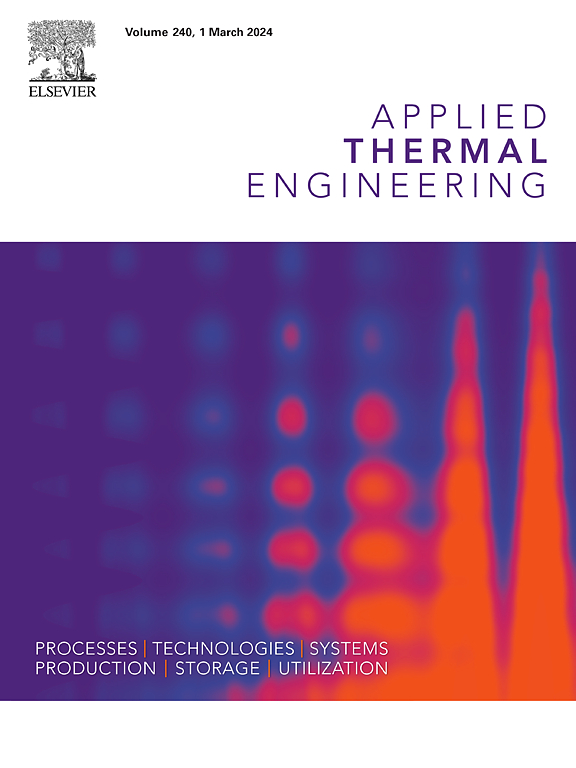振动中非稳定固-固界面接触传热的热波动特性
IF 6.9
2区 工程技术
Q2 ENERGY & FUELS
引用次数: 0
摘要
在航空航天和车辆领域,电力电子设备及其配套的热管理系统不可避免地会受到振动环境的影响。热管理组件之间不连续的配合表面很容易受到振动条件的影响,因为振动响应差异很大,严重降低了散热效率并导致电子元件过热。为了避免不可预知的热崩溃,建立固-固配合表面之间接触传热特性的数值预测方法是必不可少的。本文提出了一种力学-热学顺序耦合方法,以阐明接触界面的真实接触状态和传热特性,并通过实验进行了有效验证。研究表明,振动下的接触传热取决于配合界面的实际接触面积。热接触传导在振动条件下出现热波动,表现出与振动频率相关的周期性波动。与三角波和正弦波振动相比,梯形波导致的热源温度波动更为剧烈。研究结果为热管理系统的优化设计和应用领域的拓展提供了有价值的指导。本文章由计算机程序翻译,如有差异,请以英文原文为准。
Thermal fluctuation characteristics of unsteady solid–solid interface contact heat transfer in vibration
Power electronic equipment and the accompanying thermal management system inevitably suffer vibration environments in the aerospace and vehicle fields. Discontinuous mating surfaces between thermal management components are vulnerable to vibration conditions on account of dramatic vibration response differences, seriously degrading the heat dissipation efficiency and inducing overheat of electronics. To avoid unpredictable heat collapse, it is indispensable to establish a numerical prediction method for the contact heat transfer characteristics between solid–solid mating surfaces. A mechanical-thermal sequential coupling approach is developed to clarify the real contact state and heat transfer characteristics of the contact interface, which is effectively verified by experiments. The research indicates that the contact heat transfer under vibration depends on the real contact area in the mating interface. The thermal contact conductance shows thermal fluctuation under vibration conditions, exhibiting the vibration frequency-dependent periodic fluctuation. Compared to triangular and sinusoidal wave vibration, trapezoidal wave leads to more drastic temperature fluctuation of the heat source. The results provide valuable guidance for the optimization design of thermal management systems and the expansion of the application field.
求助全文
通过发布文献求助,成功后即可免费获取论文全文。
去求助
来源期刊

Applied Thermal Engineering
工程技术-工程:机械
CiteScore
11.30
自引率
15.60%
发文量
1474
审稿时长
57 days
期刊介绍:
Applied Thermal Engineering disseminates novel research related to the design, development and demonstration of components, devices, equipment, technologies and systems involving thermal processes for the production, storage, utilization and conservation of energy, with a focus on engineering application.
The journal publishes high-quality and high-impact Original Research Articles, Review Articles, Short Communications and Letters to the Editor on cutting-edge innovations in research, and recent advances or issues of interest to the thermal engineering community.
 求助内容:
求助内容: 应助结果提醒方式:
应助结果提醒方式:


